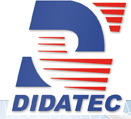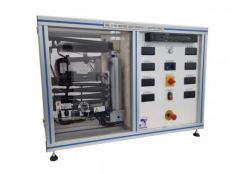Description
An absorption refrigeration system uses three products: hydrogen, water and ammonia. A small amount of sodium chromate Na2CrO4 is added to reduce corrosion, but this product has no effect on cooling.
A solution of ammonia (ammonia in solution in water) is boiled in a boiler, the temperature is about 180 °. Ammonia that boils at a lower temperature than water escapes from the solution. Boiling carries away part of the solution (which is here a very dilute solution because practically all the ammonia has vaporized).
The water is harvested in a separator and returned to the boiler. The temperature is about 110° and the pressure causes the remaining water vapour to liquefy. The boiler has a peculiar shape: a boiling tube in the center and a siphon on the outside. The water that falls back into the boiler actually falls into the outer siphon. Boiling ammonia carries water droplets to the siphon (this is the 'bubble pump').
The ammonia that evaporates forms bubbles that escape from the solution and carry ammonia (more and more diluted). We have ammonia gas and ammonia water at the outlet of the bubble pump.
The ammoniacal water flows into the siphon and then into the absorber via a hose thanks to gravity. In the pipe, the water is cold
The ammonia cools and liquefies in the condenser. Ammonia comes into contact with hydrogen in the evaporator. The partial pressure of ammonia decreases and ammonia evaporates, producing cold.
The gaseous ammonia now passes through a tank and rises to the absorber where it encounters water that runs against the current. The ammonia gas dissolves in the water and we again obtain a concentrated solution of ammonia. As a gas, only hydrogen remains, which is again used in the evaporator. The absorption of ammonia gas in runoff water keeps the partial pressure of ammonia low.
The rugged design of this equipment makes it perfectly suited for use in schools.
Its anodized aluminum structure on wheels gives it great robustness and flexibility of integration into your premises. The manufacture of this equipment complies with the European machinery directive.

